Shopping Cart
- Remove All
 Your shopping cart is currently empty
Your shopping cart is currently empty
Anti-EAAT3 Antibody (2S513) is a Rabbit antibody targeting EAAT3. Anti-EAAT3 Antibody (2S513) can be used in ICC,IF,IHC,WB.
| Pack Size | Price | Availability | Quantity |
|---|---|---|---|
| 50 μL | $297 | 7-10 days | |
| 100 μL | $496 | 7-10 days |
| Description | Anti-EAAT3 Antibody (2S513) is a Rabbit antibody targeting EAAT3. Anti-EAAT3 Antibody (2S513) can be used in ICC,IF,IHC,WB. |
| Synonyms | Solute carrier family 1, member 1, Solute carrier family 1 member 1, Solute carrier family 1 (neuronal/epithelial high affinity glutamate transporter, system Xag), member 1, SOLUTE CARRIER FAMILY 1 (NEURONAL/EPITHELIAL HIGH AFFINITY GLUTAMATE TRANSPORTER), MEMBER 1, Solute carrier family 1 (neuronal / epithelial high affinity glutamate transporter, system Xag), member 1, Sodium-dependent glutamate/aspartate transporter 3, Sodium dependent glutamate/aspartate transporter 3, SLC1A1, Slc1a 1, Slc1 a1, REAAC1, REAAC 1, Neuronal and epithelial glutamate transporter, MEAAC1, MEAAC 1, GLUTAMATE TRANSPORTER, HIGH-AFFINITY, Excitatory amino-acid carrier 1, Excitatory amino acid transporter3, Excitatory amino acid transporter 3, Excitatory amino acid carrier1, Excitatory amino acid carrier 1, EAAT 3, EAAC1, EAAC 1, EAA3_HUMAN |
| Ig Type | IgG |
| Clone | 2S513 |
| Reactivity | Human,Mouse,Rat |
| Verified Activity | 1. Western blot analysis of EAAT3 on mouse liver tissue lysate using anti-EAAT3 antibody at 1/500 dilution. 2. Immunohistochemical analysis of paraffin-embedded rat brain tissue using anti-EAAT3 antibody. Counter stained with hematoxylin. 3. Immunohistochemical analysis of paraffin-embedded human tonsil tissue using anti-EAAT3 antibody. Counter stained with hematoxylin. 4. Immunohistochemical analysis of paraffin-embedded human colon cancer tissue using anti-EAAT3 antibody. Counter stained with hematoxylin. 5. Immunohistochemical analysis of paraffin-embedded human kidney tissue using anti-EAAT3 antibody. Counter stained with hematoxylin. 6. ICC staining EAAT3 in HUVEC cells (green). The nuclear counter stain is DAPI (blue). Cells were fixed in paraformaldehyde, permeabilised with 0.25% Triton X100/PBS. 7. ICC staining EAAT3 in LOVO cells (green). The nuclear counter stain is DAPI (blue). Cells were fixed in paraformaldehyde, permeabilised with 0.25% Triton X100/PBS. 8. ICC staining EAAT3 in SH-SY5Y cells (green). The nuclear counter stain is DAPI (blue). Cells were fixed in paraformaldehyde, permeabilised with 0.25% Triton X100/PBS. 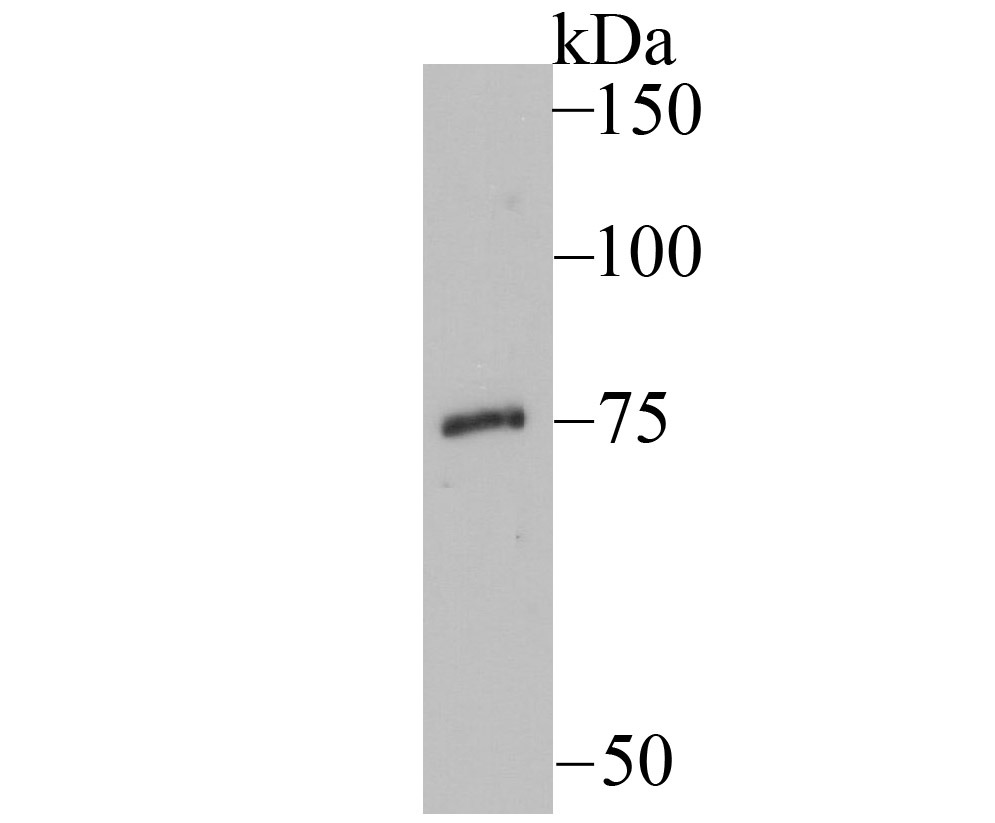 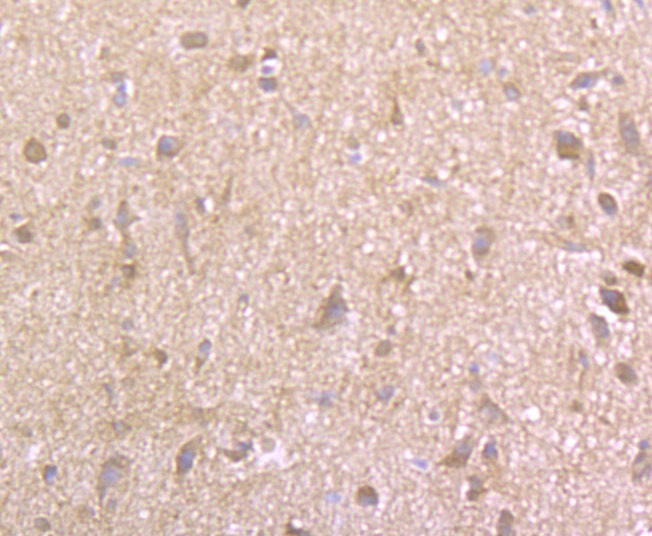 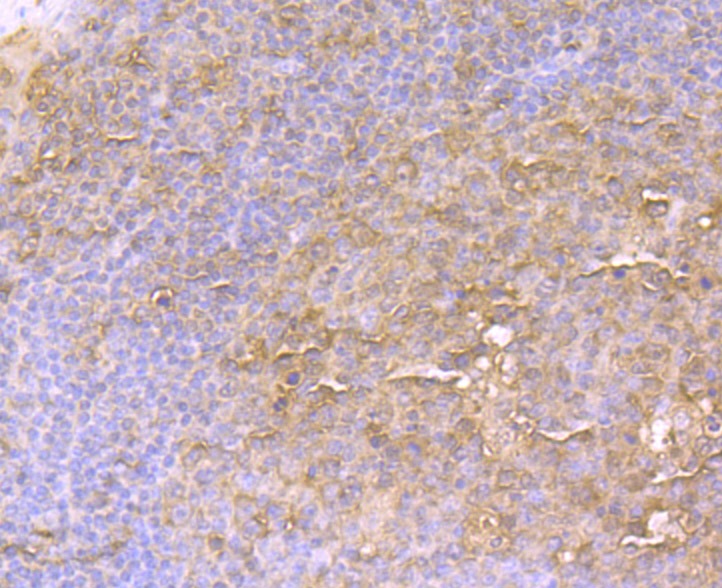 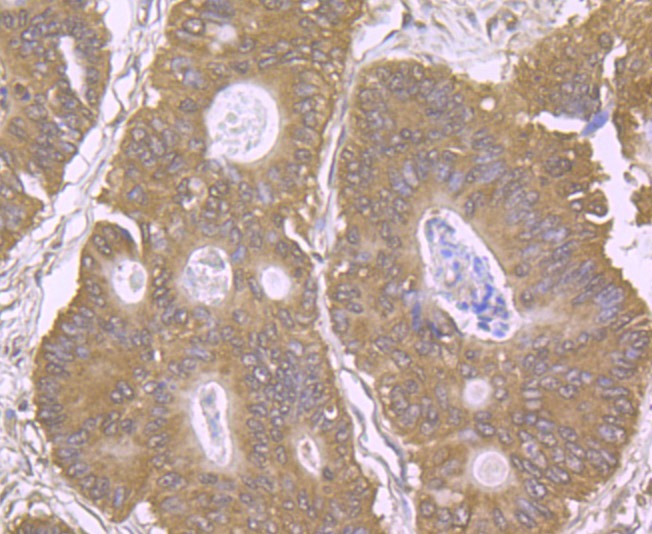 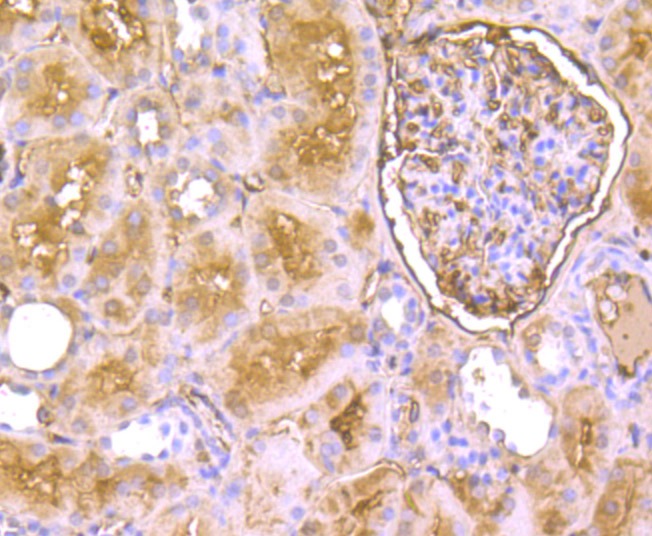 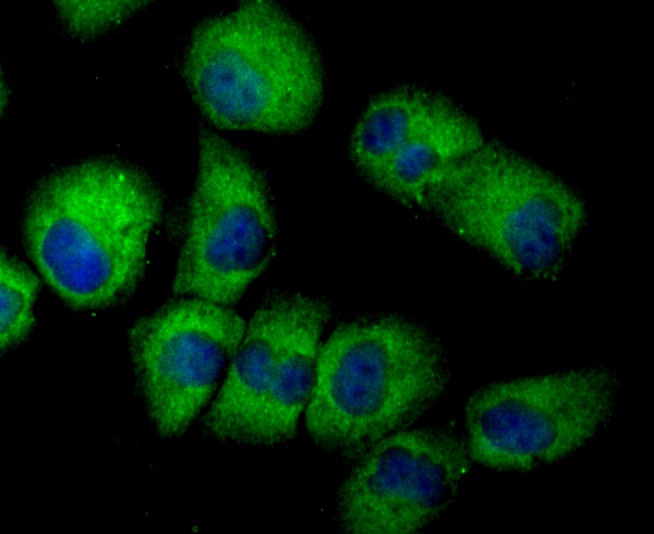 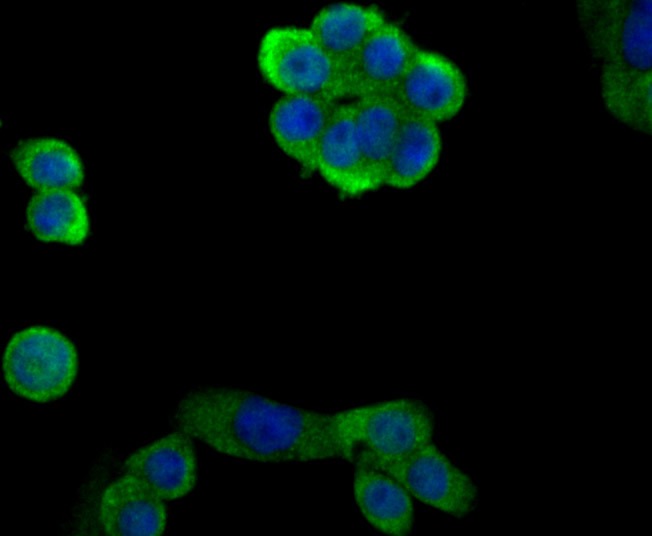 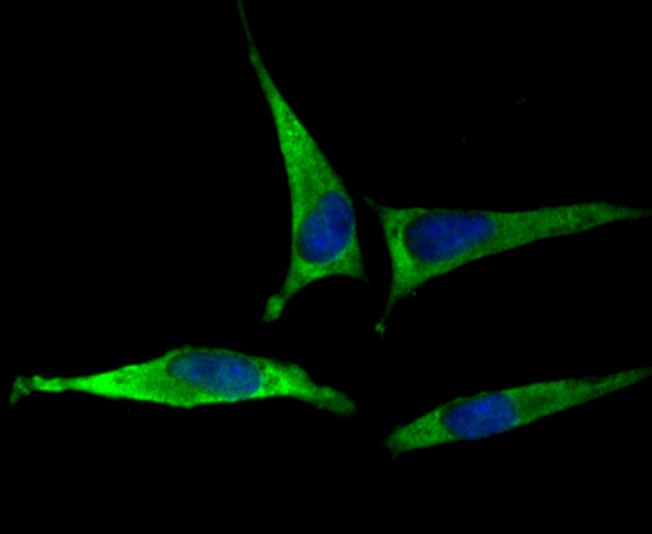 |
| Application | |
| Recommended Dose | WB: 1:500; IHC: 1:50-200; ICC:IF: 1:50-200 |
| Antibody Type | Monoclonal |
| Host Species | Rabbit |
| Construction | Recombinant Antibody |
| Purification | ProA affinity purified |
| Appearance | Liquid |
| Formulation | 1*TBS (pH7.4), 1%BSA, 40%Glycerol. Preservative: 0.05% Sodium Azide. |
| Research Background | Sodium-dependent, high-affinity amino acid transporter that mediates the uptake of L-glutamate and also L-aspartate and D-aspartate. Can also transport L-cysteine. Functions as a symporter that transports one amino acid molecule together with two or three Na+ ions and one proton, in parallel with the counter-transport of one K+ ion. Mediates Cl- flux that is not coupled to amino acid transport; this avoids the accumulation of negative charges due to aspartate and Na+ symport. Plays an important role in L-glutamate and L-aspartate reabsorption in renal tubuli. Plays a redundant role in the rapid removal of released glutamate from the synaptic cleft, which is essential for terminating the postsynaptic action of glutamate. Negatively regulated by ARL6IP5. |
| Conjucates | Unconjugated |
| Immunogen | Recombinant Protein |
| Uniprot ID |
| Molecular Weight | Theoretical: 57 kDa. |
| Stability & Storage | Store at -20°C or -80°C for 12 months. Avoid repeated freeze-thaw cycles. |
| Transport | Shipping with blue ice. |

Copyright © 2015-2025 TargetMol Chemicals Inc. All Rights Reserved.